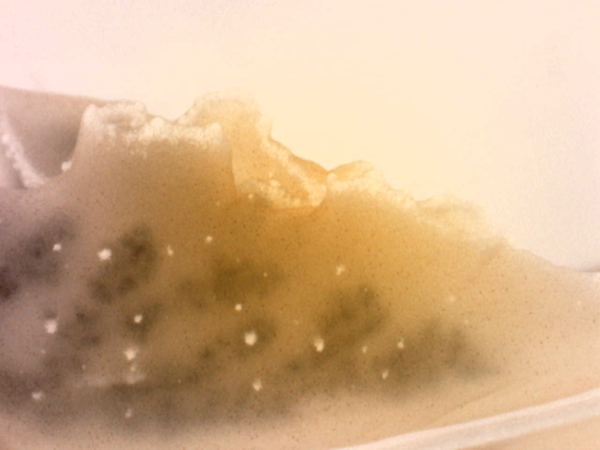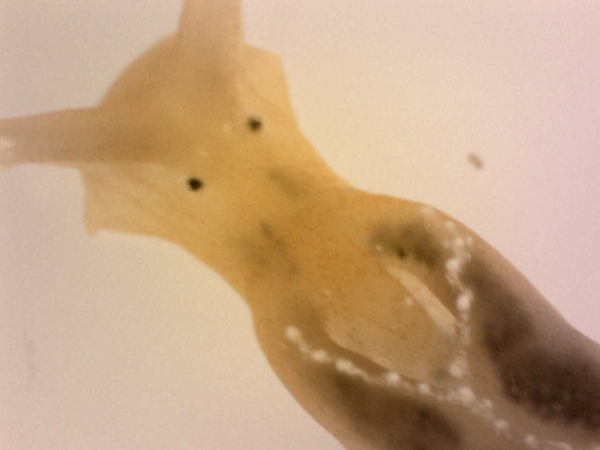Physical Description
Using measurements from eight specimens, Elysia obtusa range in size from 0.9-1.5cm in length. The animals are translucent yellow on the dorsal and ventral surfaces, with white spots on the body. The edge of the parapodia is lined with a bright white line. The colouration of the parapodia is variable, appearing dark green at times, and is believed to be a temporary colouration dependant on the amount of food matter currently retained within the animal. Animals that appear almost entirely yellow are thought to have not fed for an extended period of time. Two conspicuous eyes are located at the base of the rhinopores, on the dorsal side of the head, and appear as pigmented spots.
This species of opisthobranch may easily be confused with Elysia flava, but E. obtusa lacks the orange buccal bulb which can be viewed through the body wall near the head of E. flava individuals.

|
| Figure 1. Parapodia of E. obtusa, displaying the dark green colouring associated with recent feeding, and the white spots found on the organisms body. |

|
| Figure 2. Dorsal view of E. obtusa, displaying the white edge of the parapodia and eyespots at the base of the rhinopores. |
|